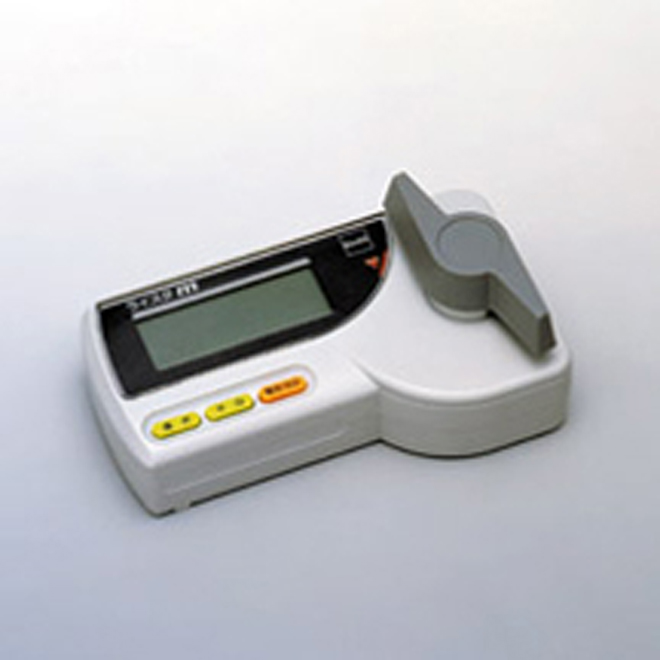Moisture Meter Reviews: Comparing the very best Designs for Professional and Do It Yourself Usage
Moisture Meter Reviews: Comparing the very best Designs for Professional and Do It Yourself Usage
Blog Article
Delve Into the Globe of Moisture Meters: Whatever You Need to Know
In the world of dampness meters lies a world of precision and functionality that usually goes unnoticed. Comprehending just how moisture meters run, the various kinds readily available, and their varied usages can lose light on their importance in making sure top quality and performance.
Exactly How Wetness Meters Job
Wetness meters operate by measuring the electrical conductivity or capacitance of materials to determine the moisture web content present - Moisture Meter. These meters are important devices throughout numerous industries, including farming, woodworking, and construction. By utilizing various techniques such as pinless or pin-type modern technology, wetness meters give accurate analyses that help professionals make notified choices
Pin-type moisture meters function by putting the sharp pins right into the product being examined. On the other hand, pinless wetness meters utilize electromagnetic signals to check a bigger area without creating any kind of damage to the product's surface.
No matter of the approach used, moisture meters play an essential role in stopping concerns such as mold and mildew growth, architectural damages, or item flaws brought on by excess moisture. Understanding just how these meters work is important for ensuring the high quality and stability of materials in numerous applications.
Sorts Of Moisture Meters
Offered the important role dampness meters play in different industries, it is necessary to understand the various types available to experts for accurately examining moisture levels. There are primarily 2 major kinds of moisture meters: pinless and pin-type wetness meters.
Pin-type wetness meters make use of two pins that are put right into the material being examined to measure the electrical resistance in between them. This approach is typically utilized for timber, drywall, and other structure products. Pin-type meters supply accurate analyses at details depths, making them excellent for determining dampness slopes.
On the various other hand, pinless dampness meters use electromagnetic sensor plates to scan a bigger location of the product without causing any type of damage. This kind appropriates for swiftly scanning large areas and is typically made use of for floor covering, walls, and ceilings. Pinless meters are hassle-free for taking readings on finished surfaces without leaving any type of visible marks.
Both kinds of moisture meters have their benefits and are selected based on the particular requirements of the work handy. Understanding the differences between these types is essential for experts to make precise dampness evaluations.
Applications Throughout Industries
With diverse capabilities, moisture meters discover extensive application throughout various sectors, helping specialists in making certain ideal problems for materials and frameworks. In the agriculture field, wetness meters are indispensable for establishing the dampness web content in grains, seeds, and hay, making certain high quality control and stopping mold and mildew growth. Construction professionals rely upon moisture meters to evaluate the moisture degrees in building products like concrete, drywall, and wood, which is essential for maintaining architectural stability and protecting against problems like rot or mold and mildew. The flooring sector utilizes wetness meters to determine the wetness material in subfloors before mounting various flooring, avoiding costly damages because of excess dampness. In the food sector, dampness meters are utilized to keep an eye on and control moisture degrees in products such as grains, nuts, and dried out fruits to preserve quality and quality. In addition, dampness meters play a vital duty in the remediation and damages evaluation industry by aiding experts determine and attend to water damage in buildings immediately. Across these diverse markets, wetness meters are crucial tools for making sure the quality, safety and security, and durability of different materials and products.
Tips for Using Dampness Meters
Utilize the dampness meter's calibration settings to ensure exact analyses when measuring the wetness content in various materials. Furthermore, make certain the meter is set to the appropriate wetness range for the material you are gauging to acquire the most exact results.

When utilizing a pin-type wetness meter, place the pins to the suitable deepness suggested for the product being examined. This makes sure that the dampness analyses are taken from the appropriate deepness within the material, providing a much more exact depiction of its dampness web content. For pinless dampness meters, bear in mind to preserve correct contact with the product's surface area to get reputable readings.

Regularly check and change the batteries in your moisture meter to avoid imprecise analyses because of reduced power. When not in usage to lengthen its life expectancy and keep its precision, Store the meter in a risk-free and dry place. By complying with these pointers, you can optimize the performance of your Our site moisture meter and get accurate moisture material dimensions across various products.

Upkeep and Calibration
To ensure the precision of dampness web content dimensions, regular upkeep and calibration of the moisture meter are essential actions in its proper functioning. Calibration changes the wetness meter to guarantee that it gives consistent and reputable results.
Calibration should be carried out periodically, specifically if the moisture meter is made use of often or in vital applications where specific measurements are called for. Several wetness meters come with calibration tools or can be adjusted by expert services - Moisture Meter. It is suggested to maintain a log of calibration dates and results to track the performance of the dampness meter in time. By preserving and calibrating the moisture meter routinely, users can he has a good point trust the accuracy of the moisture material measurements acquired.
Conclusion
Finally, dampness meters play a vital duty in various industries by properly gauging the moisture material of products. Understanding exactly how these tools function, the various types readily available, and appropriate upkeep and calibration are necessary for acquiring dependable outcomes. Whether in construction, manufacturing, or farming, using wetness meters assists ensure quality assurance and effectiveness in processes.
Construction experts rely on wetness meters to evaluate the moisture degrees in structure materials like timber, drywall, and concrete, which is essential for maintaining architectural honesty and preventing concerns like rot or mold. The floor covering sector utilizes wetness meters to determine the wetness material in subfloors prior to setting up different flooring coverings, avoiding pricey damages due to excess moisture.Use the moisture meter's calibration settings to guarantee exact analyses when measuring the dampness material in different materials. By following these tips, you can maximize the efficiency of your moisture meter and obtain accurate dampness web content measurements throughout various materials.
In final thought, wetness meters play an essential find more information function in numerous industries by accurately gauging the dampness web content of products.
Report this page